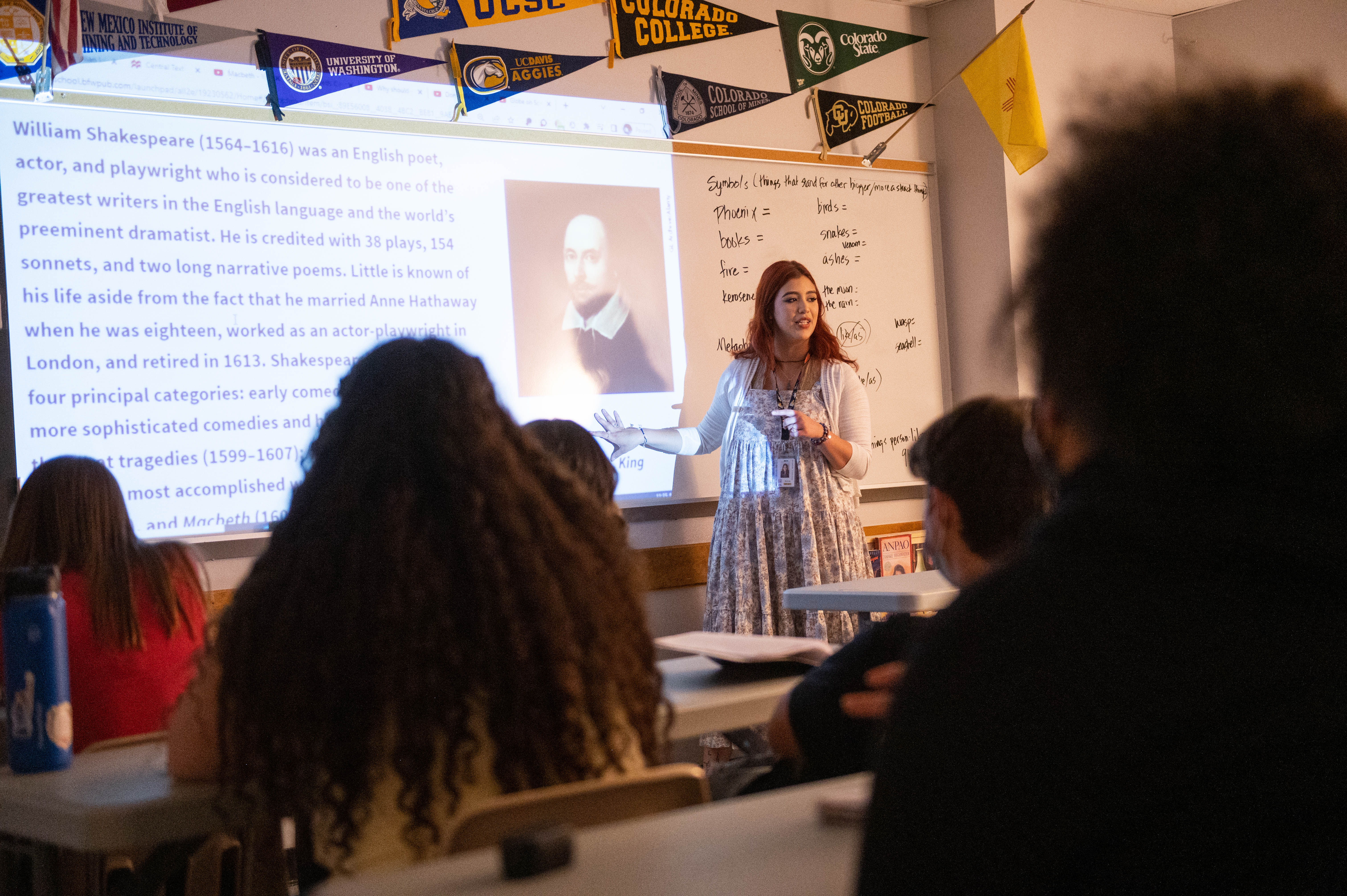Inspired by her own teachers, her love of literature and her experiences as an immigrant from Mexico, Maria Lara Moreno chose to become a teacher to help children who were just like her.
“I decided to become a teacher because of the wonderful educators that I had through my scholarly years in the Las Cruces Public Schools,” says Lara Moreno, who was a student teacher in LCPS during her final year at NMSU.
During her time as a student teacher, Lara Moreno grew concerned with the shortage of teachers, a nationwide problem many colleges and universities, including NMSU, are addressing through teacher preparation programs.
The number of teacher vacancies in New Mexico has nearly doubled during the COVID-19 pandemic, according to a 2021 report by NMSU’s Southwest Outreach Academic Research Evaluation & Policy Center, housed in the College of HEST.
The number of teacher vacancies rose from 571 in 2020 to just over 1,000 in 2021, prompting the College of HEST to adopt initiatives to help staff New Mexico classrooms with teachers.
In 2020, there were 889 educator vacancies, with 571 total teacher vacancies. The 2021 report found 1,727 educator vacancies, with 1,048 of those for teachers. The areas with the highest number of teacher vacancies are special education and elementary education, which were also the top areas in the prior two reports. The subjects with the largest needs include math, science and English language arts.
Rick Marlatt, interim director of the NMSU School of Teacher Preparation, Administration and Leadership, says teacher shortages are a problem nationwide due to factors such as lower compensation and fewer benefits when compared to other careers. In New Mexico, shortages have been worsened due to challenges brought on by COVID-19.
“Our teacher education program at New Mexico State University continues to approach these challenges with innovative solutions; and with the continued support from our stakeholders, we believe we can turn a corner in our mission to generate and sustain a robust, diverse teacher pipeline in New Mexico,” Marlatt says.
The report states that across all four-year and two-year higher education institutions and programs in New Mexico, 1,596 students were admitted to an educator preparation program during the 2020-21 academic year, while 979 students completed an educator preparation program. This is an increase of 169 admissions and a decrease of 51 program completions compared to last year.
“We have launched new recruitment and retention initiatives to allow students to re-imagine the work of the profession,” says Henrietta Pichon, former interim dean of the College of HEST. “We don’t want to miss the opportunity to put lessons learned during the pandemic to the test: using new technologies, alternating with instructional hours and days, creating culturally responsive teaching that addresses multiple needs of the student learner, engaging families, and so on.”
Lara Moreno said her mentors at NMSU, including instructor Josh Silver, have been very supportive of students like her.
“They are the light and support for many students,” Lara Moreno says. “I truly believe NMSU is doing the best they can with the circumstances. I have had amazing educators from kindergarten to my senior year as an Aggie. I couldn’t be more blessed.”

Maria Lara Moreno graduated from the College of HEST in spring 2022. She was inspired to pursue teaching by her own teachers in the Las Cruces Public Schools.

Moreno.
1220 Stewart Street
O'Donnell Hall, Suite 301
Las Cruces, NM 88003